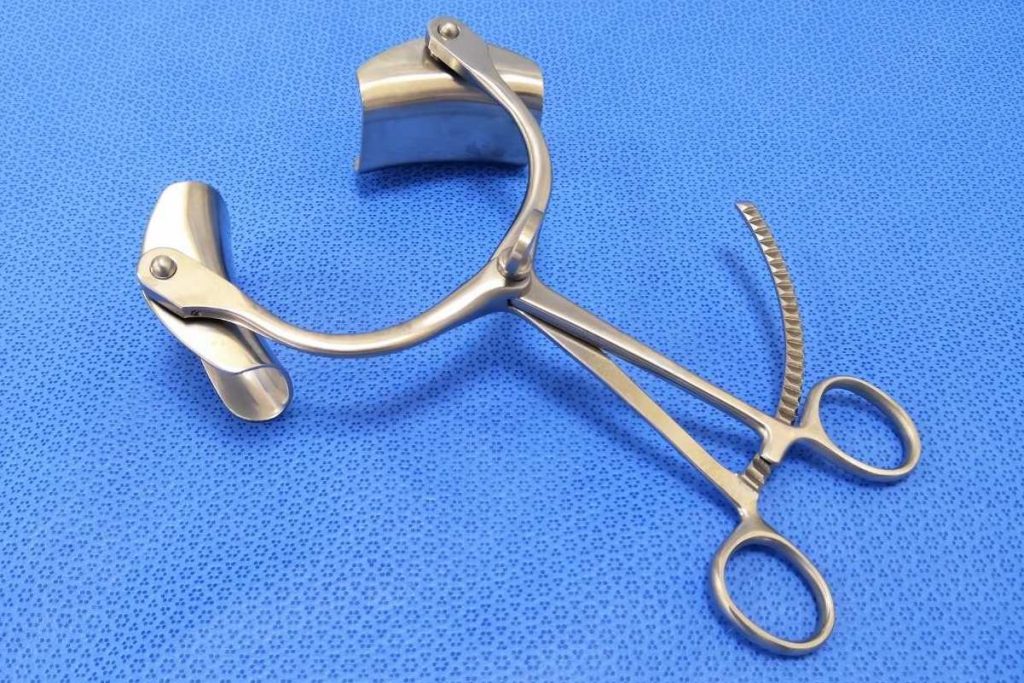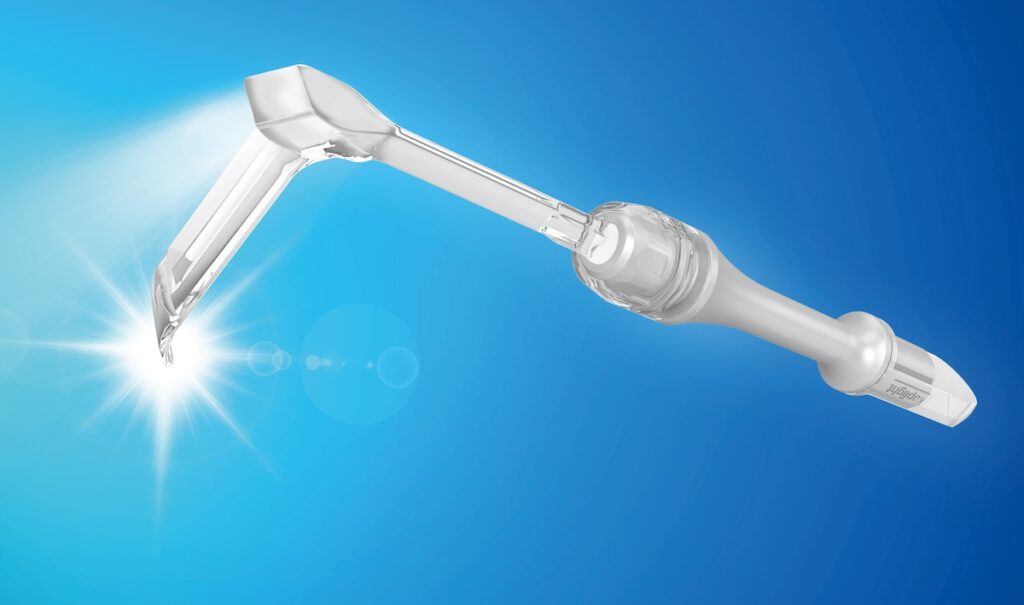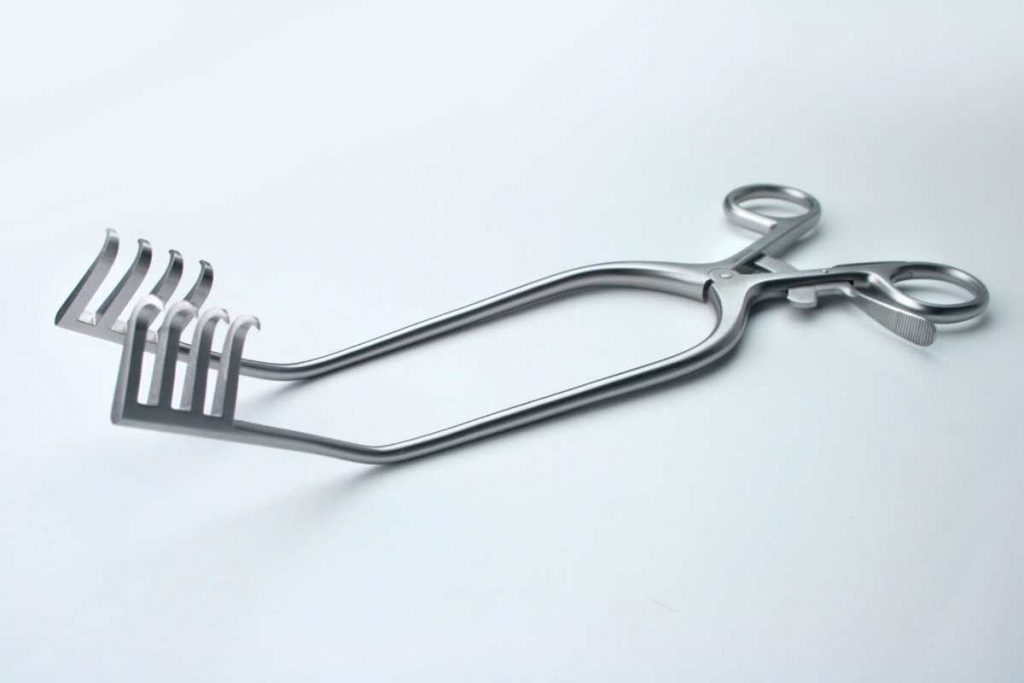Surgical retractors are typically made from metals or plastics. Metal retractors were the standard for a very long time, but high-performance plastics are now viable, practical alternatives, with many advantages.
Surgical-grade plastics, such as polycarbonates and polyacrylamides, are materials that have become alternatives to steel, titanium, and other metals.
Plastics and metals each have pros and cons. Let’s take a deeper dive to help your decision-making when choosing which retractor to use.
Why does the material matter for a surgical retractor?
Surgical tools must be made of high-quality materials to ensure the highest levels of performance and safety.
Surgical retractors need to be durable, hygienic, and, depending on the surgery, lightweight and unobtrusive.
Metal retractors are the norm. These retractors offer excellent strength and can be sterilized and reused many times.
However, high-performance plastics have emerged, and they can outperform metal surgical retractors in many ways. Top-level plastic retractors are lower-priced, lighter, and less obtrusive.
The use of plastic can also reduce manufacturing costs. For instance, plastic injection molding lets designers consolidate parts. This gets rid of the expenses of multiple components. Plastic retractors can also offer greater chemical and thermal stability. Moreover, they enable improved aesthetics and ergonomics thanks to:
- Design flexibility that allows production of clear plastic retractors, and in different colors, and more variable shapes and sizes
- Ability to attach different grip options
- Lighter weight, which reduces fatigue
- Incorporation of lighting functionality, eliminating some external lighting needs
Metals used for surgical retractors
Surgical tools made from metals have in fact been used since the 8th century BC, and remain in wide use up to the present.
Advantages of metal retractors:
- Strength and mechanical load
- Thermal and chemical stability
- Withstand harsh sterilization conditions
- Reusable
Stainless steel
Medical- or surgical-grade steels are typically stainless steels composed of chromium, carbon, nickel, and molybdenum.
The property of being alloys makes them more rigid and more corrosion-resistant.
Common examples include austenitic 316 and martensitic 420 and 440. Conventionally, these are widely used materials for metal retractors used in surgery.
Commercial stainless-steel retractors
These types of retractors include:
- Deaver retractor: A question mark-shaped retractor used to retract abdominal and thoracic incisions
- Balfour retractor: A self-retaining abdominal retractor typically used in laparotomy surgeries
- Murphy retractor: A handheld hook-like retractor used in general surgeries to retract very delicate tissues within narrow spaces
- Volkmann retractor: A handheld hook-like device used in a variety of surgical procedures and commonly used in small bone and joint procedures

Pros of stainless steel for retractors
- Chemical stability
- Corrosion resistance
- Strength and stiffness
- Sterilization resistance
- Thermal resistance
Cons of stainless steel for retractors
- Expensive
- Soft tissue damage
- Slippery upon contact with body fluids
- Thermal conductivity can lead to tissue injury
Titanium
Medical-grade titanium has been used in many surgical tools. This is also an alloy, actually made from titanium, aluminum, and vanadium. It offers excellent strength and corrosion resistance.
Commercial titanium retractors
These include:
- Weitlaner retractor: A self-retaining finger ring and scissor-like retractor used widely to hold back the edges of shallow incisions, like in neurosurgery and orthopedic surgeries
- Dubost thoracic retractor: A curved retractor with exchangeable blades, commonly used in cardiovascular and thoracic surgeries
- Titanium iris retractor: A superelastic ophthalmic hook retractor used for the surgical dilatation of the pupil in eye surgery
Pros of titanium for retractors
- Lightweight
- Very strong
- More flexible than steel
- Biocompatible
- Low electrical and thermal conductivity
- Durable
Cons of titanium for retractors
- Expensive
- Hard to cast
Aluminum
Medical-grade aluminum is composed of aluminum, silicon, and magnesium. Common examples include aluminum 6061 and 6063. These have been in use in medicine since around the 1930s. It offers a lighter and cheaper alternative, with the tradeoffs that come with these properties.
There are many aluminum retractors on the market. One example is the Finochietto retractor. It’s used as a rib spreader in thoracic surgery.
Pros of aluminum for retractors
- Cheap
- Design resilience
- Lightweight
- Strength
- Reusable
- Corrosion resistance
Cons of aluminum for retractors
- Electrical and heat conductivity
- Shorter life
Plastics used for surgical retractors
The advances in materials science have led to the discovery of high-performance polymers.
Like the koplight™, modern plastic retractors introduce new possibilities in surgical retractor design and application, such as onboard lighting and greater variety in sizes and fittings.
Switching from metal to plastic retractors has many advantages, such as:
- Weight reduction
- Design resilience
- Ergonomic improvements
- Cost benefits
Plastic retractors are typically, though not always, designed for single-use applications. But this oversimplifies things. As plastic devices can have more components, and in flexible arrays of sizing, it may only mean disposal of one part. This can prove economical and can enhance surgical possibilities.
Polycarbonates (PCs)
Polycarbonates are polyester transparent thermoplastics. Apart from the characteristically clear and clear appearance, PCs can be produced in different colors.
Being transparent, PC retractors are a superior choice for:
- Surgery requiring strong, precision lighting
- CT- and X-ray-guided operations, as they don’t obstruct the imaging nearly as much as metal devices
The koplight™ surgical light retractor is one example of this type of retractor.

Pros of PCs for retractors
- Thermal stability
- Clear/transparent
- Don’t obstruct imaging
- Good insulator
Cons of PCs for retractors
- May incur scratches
- Not intended for many uses
Polyarylamides (PAAs)
Polyarylamides are a class of thermoplastics. They usually contain around 50% glass fiber or carbon fiber (source).
PAAs have replaced stainless steel in some common deep surgery retractors, such as abdominal surgery.
Solvay has used Ixef PAAs to make Hohmann surgical retractors. This choice showed more enhanced ergonomics and aesthetic surface finish.
Pros of PAAs for retractors
- Strength
- Rigidity
- Excellent surface finish
- Sterilization resistance
Cons of PAAs for retractors
- UV-light sensitive
- Single-use applications
Polyaryletherketones (PAEKs)
PAEKs are a class of thermally resistant thermoplastics. They can withstand most sterilization processes, which makes them reusable and thus longer-lived. This does come at a tradeoff in price (higher).
PAEKs show superb mechanical stability.
They were first introduced to the medical market by Victrex in the late 1990s.
Pros of PAEKs for retractors
- Rigid
- Lightweight
- Chemical resistance
- Sterilization resistance
- Reusable
- Excellent aesthetics
Cons of PAEKs for retractors
- Expensive
- Their fabrication requires high-temperature molding and extrusion
Other materials used for surgical retractors
Silicone
Medical-grade silicone is a high-performance polymer. It’s made of alternating silicon and oxygen atoms and a USP Class VI material. It’s used in many medical applications.
Many studies (such as this one and this one from Japan, and this one from the U.S.) have reported efficient use of silicone retractors.
Silicone retractors may be used in dental, oral, and brain surgeries.
Pros of silicone for retractors
- Thermal stability
- Excellent tear strength
- Chemical resistance
- Sterilization resistance
- Design resilience
- Compatible with delicate tissues
Cons of silicone for retractors
- Expensive
- Non-recyclable
A final word on surgical retractor materials
Surgical retractors are a critical device for safe and successful surgery. Metal retractors, thanks to their strength, long life, and predictability, have remained the norm for centuries. Modern plastics, however, have changed the playing field.
Amid soaring healthcare costs, plastic-based retractors offer an affordable option for hospitals, clinics, and doctors. But it’s not just cost, it’s quality and innovation. Plastic surgical retractors allow greater visibility and reduce fatigue. They’re versatile and customizable as well.
The koplight™ from Yasui is leading the way in this area. Get in touch with us to see how you save costs and transform how you perform surgery with these innovative, award-winning retractors.

